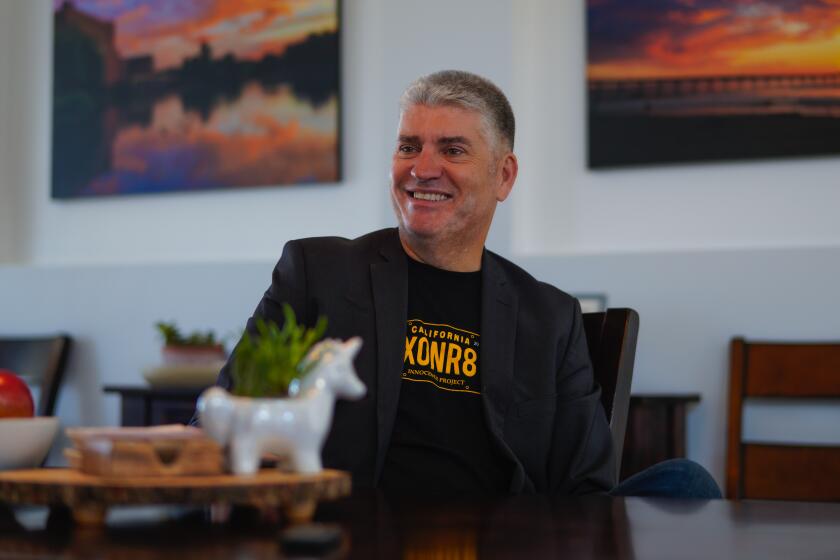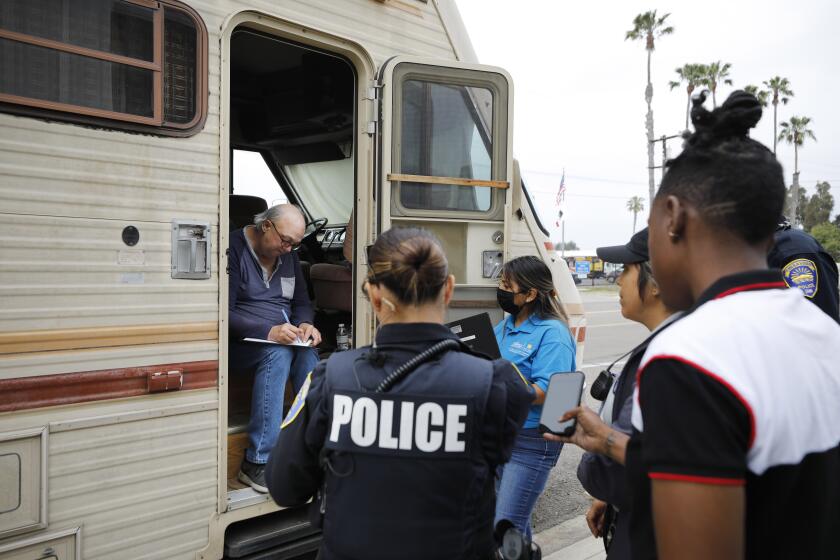How police used cellphone records to find 2 killers
On the day Lamar Canady was gunned down inside his Oak Park barbershop, police didn’t have much information to work with to find the killer.
A witness was inside the shop and saw an unidentified gunman shoot Canady multiple times in the head and body.
San Diego police had a basic description of the shooter — a black man who wore a dark shirt, shorts, a baseball cap and white shoes — but it wasn’t enough to help them identify and locate the person who executed Canady, 32.
What they did have were surveillance videos recovered from a liquor store next door to the Official Cutz barbershop, and an auto repair business across the street. The images showed a group of three or four men milling around those businesses about the time of the shooting.
A couple of them were talking on cellphones.
That sliver of information led to an avalanche of cell tower data that investigators sifted and sorted until they identified two suspects, one of whom was the triggerman and the other a lookout.
Cellphone evidence is hardly a new concept in criminal trials, but this time it played a major role in a remarkable marriage of new school investigation techniques and old school detective work that resulted in the arrests and convictions of two men.
Dion Chambers, 51, and Ian Patrick Guthrie, 40, a pair of Jamaican-born drug traffickers turned hitmen, were found guilty of first-degree murder in May.
Deputy District Attorney Sophia Roach, who handled the case, argued in trial that the leader of an international drug-trafficking operation rooted in Jamaica had ordered the revenge hit on Canady because the two had slept with the same woman. The boss was also told Canady may have stolen a “significant” amount of marijuana from him, according to testimony.
“It was really an exciting investigation to watch develop from a real whodunnit to proof beyond a reasonable doubt,” Roach said later.
Here’s how it unfolded.
According to a report by police Detective Jim Jones, investigators determined from the surveillance footage that the men in the videos were working together. One man, later identified as Chambers, appeared to be futzing around with several items in the liquor store until he got a phone call, paid for two beers and hurried outside.
Two other suspects, one of whom was Guthrie, were nearby in a silver sedan — waiting for the moment when Canady poked his head outside the barbershop.
Police Department Crime Analyst Peter Villaver, an expert in digital evidence collection, studied the videos and concluded the man in the liquor store and one of the guys in the sedan had both used their phones on May 9, 2014, shortly after 11:23 a.m. The call lasted 18 seconds.
The shooting was reported to police just before 11:30 a.m.
Based on Villaver’s analysis, detectives obtained what’s called a “cell tower dump” — data collected from nearby cellular service towers between 11 a.m. and 12 p.m. the day of the shooting. The information came from five wireless carriers and included everything from phone numbers to times calls were made.
That yielded thousands of phone calls. Villaver was then able to narrow the number of calls by duration, proximity to the murder scene and other factors.
That reduced the phone numbers possibly associated with the killers to just two.
Detectives were then able to track the phone numbers, figure out who had the phones at the time of the shooting and arrest the suspects after conducting some old-fashioned physical surveillance and a traffic stop.
Guthrie was picked up in Rancho Peñasquitos in August 2014. Chambers was arrested in Missouri around the same time after detectives learned one of the phones had been used in San Diego, Houston, Denver, Baltimore, Memphis and Kansas City, Mo, following Canady’s murder.
Police found Chambers, also known as Peter Johnson, by whittling down information from airline schedules and passenger manifests, then tracking him through old-school surveillance with help from Kansas City police and the FBI.
“It was truly a needle in a haystack,” the prosecutor said in an email. “But with their careful sorting, analysis, and perseverance, SDPD identified both suspects and linked them to the crime through phone, video and ultimately their own their statements.”
On Aug. 12, Chambers was sentenced to 75 years to life in prison for his role in Canady’s murder. Guthrie got 55 years to life.
dana.littlefield@sduniontribune.com





